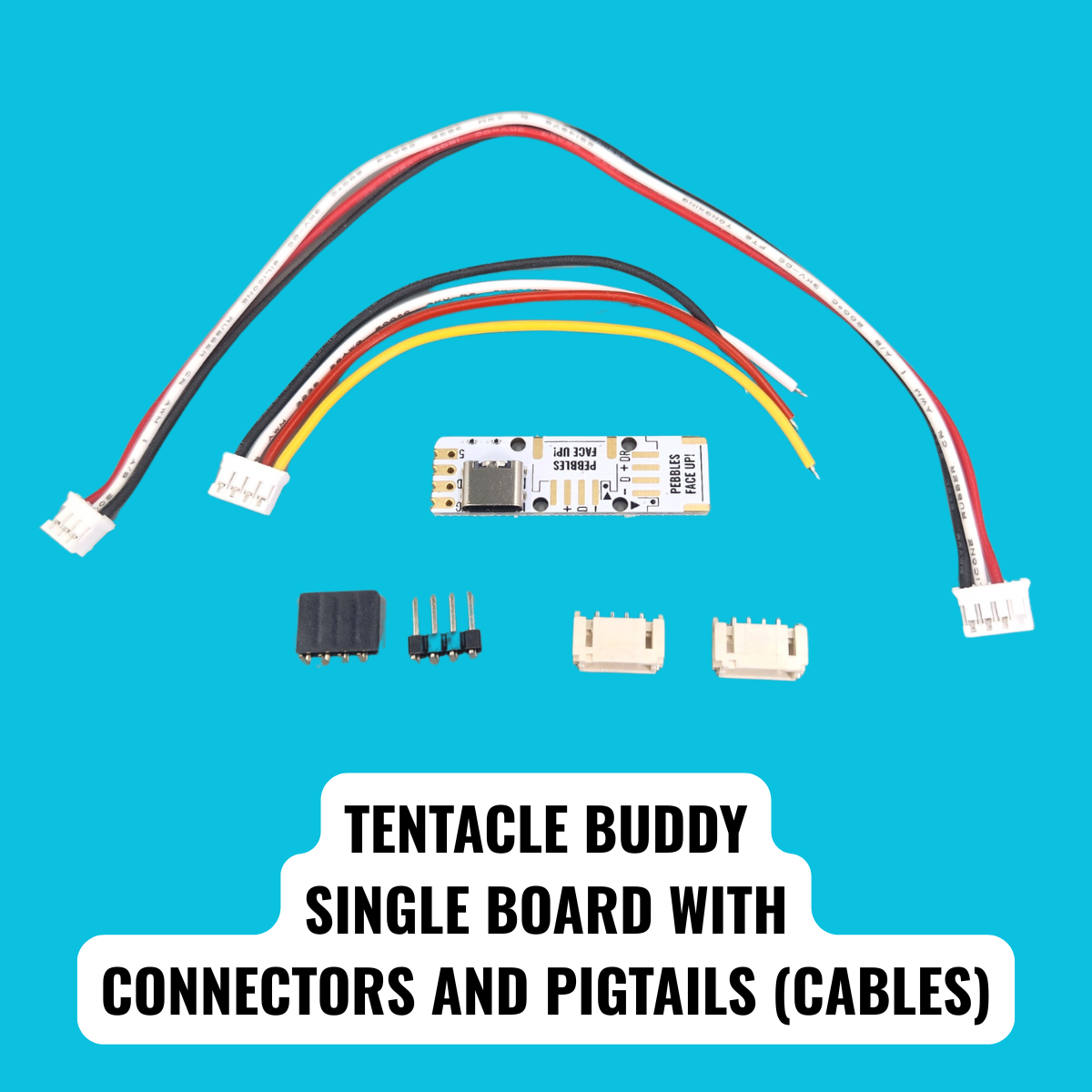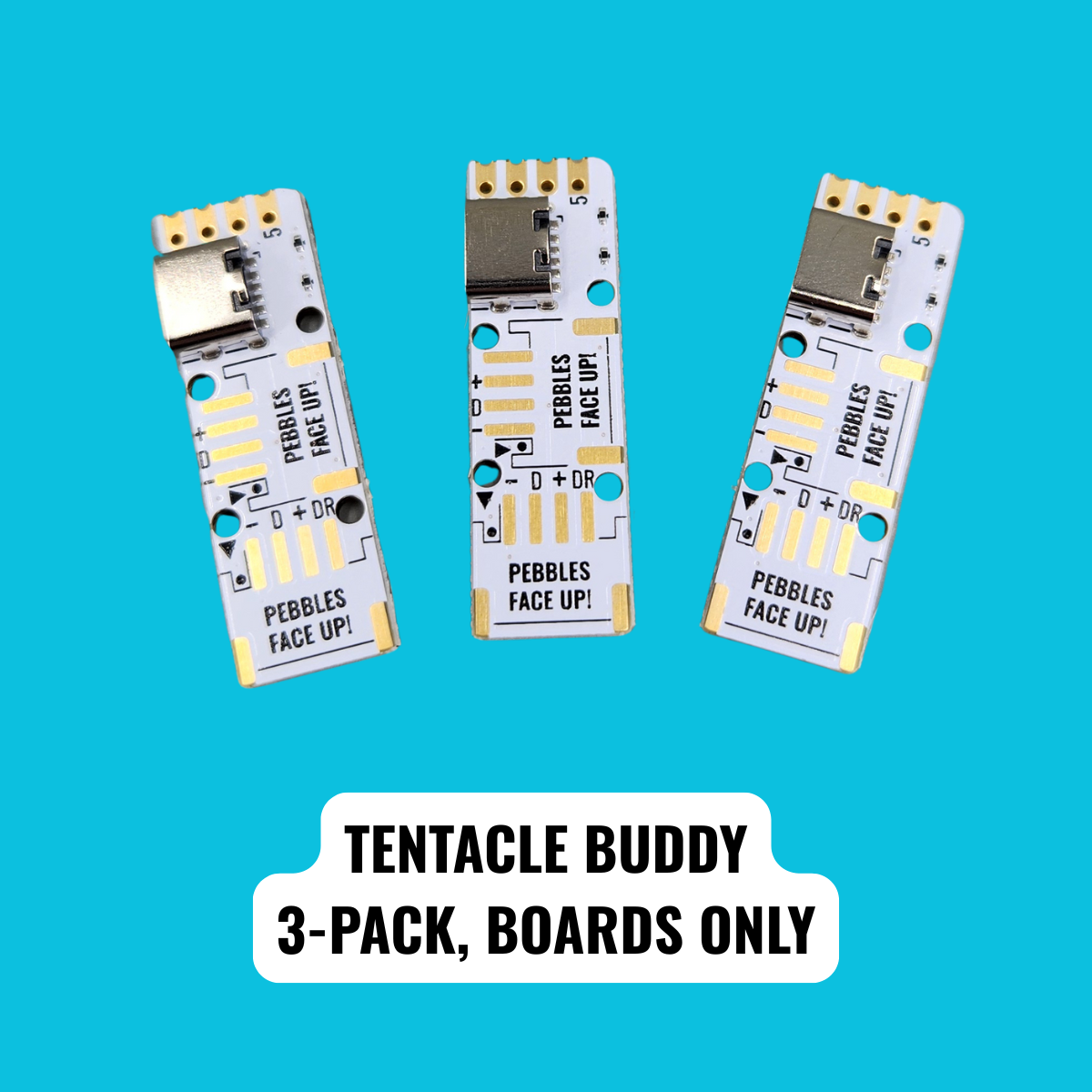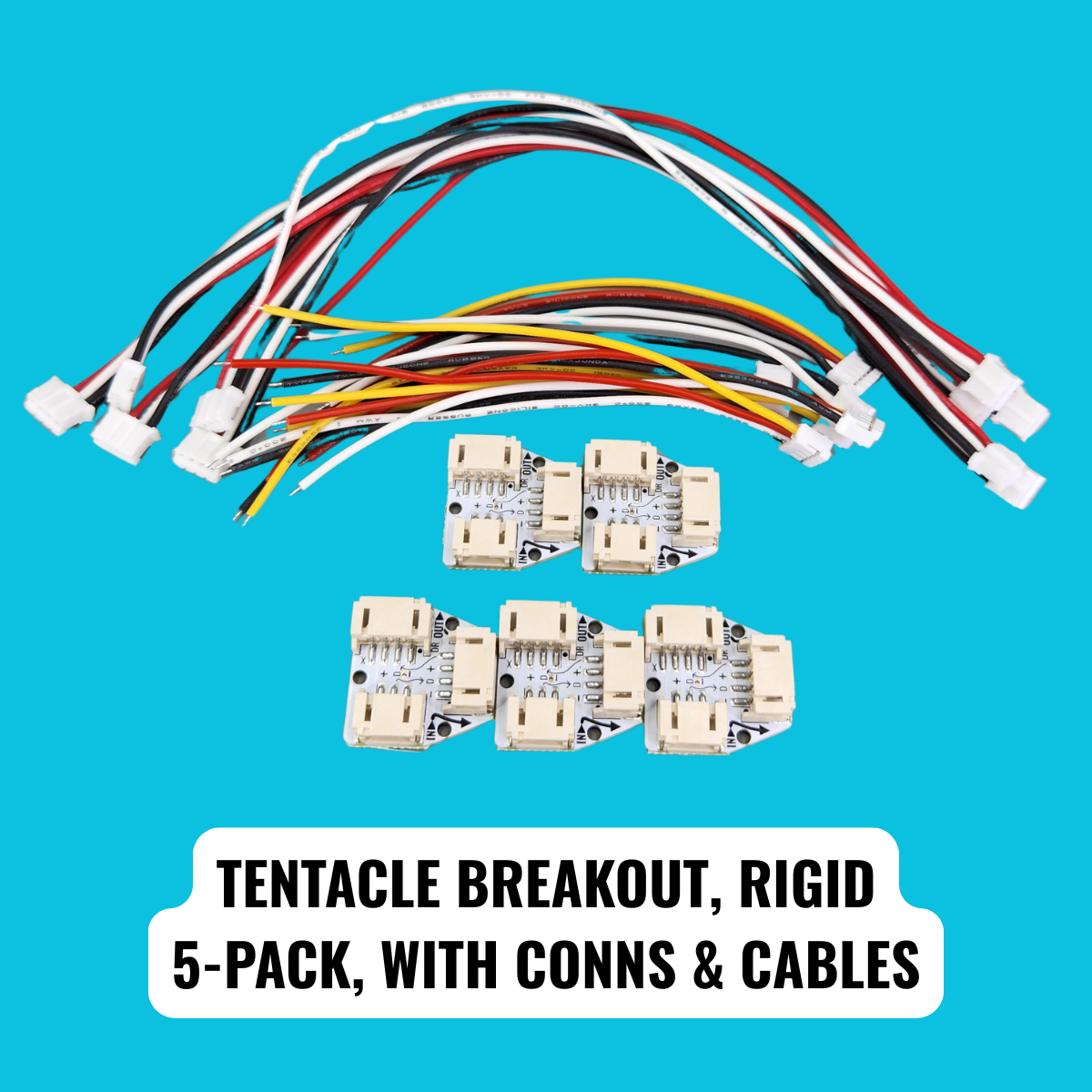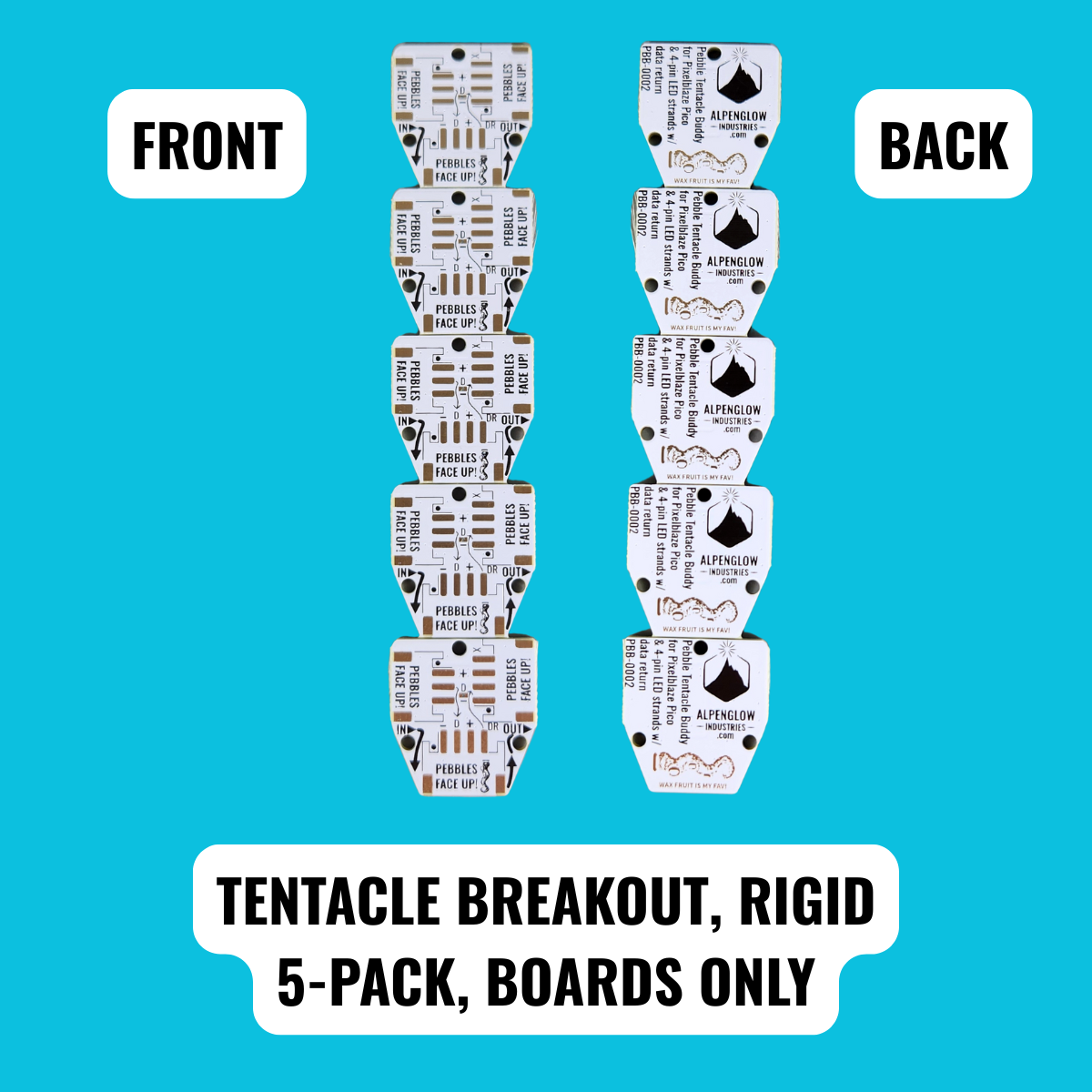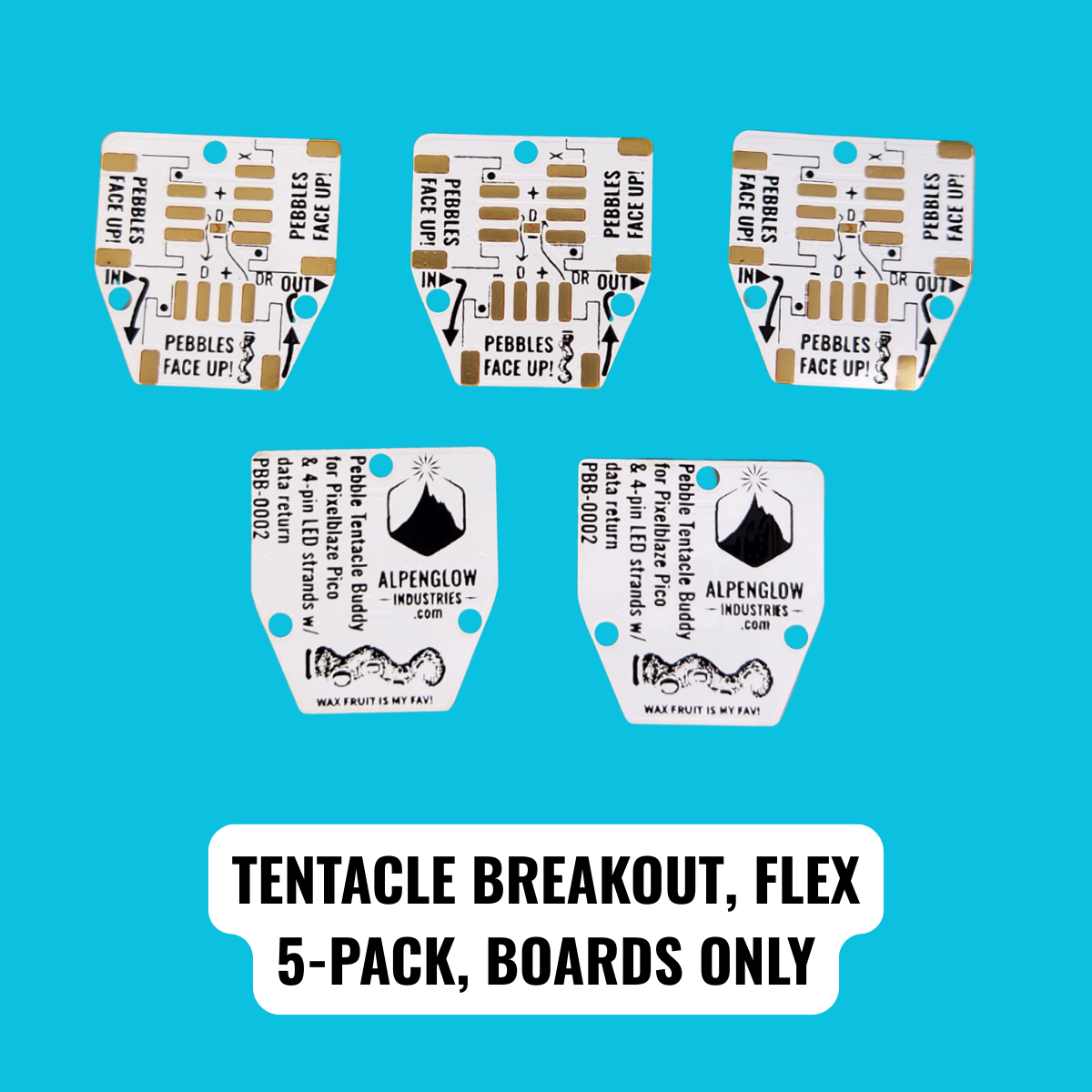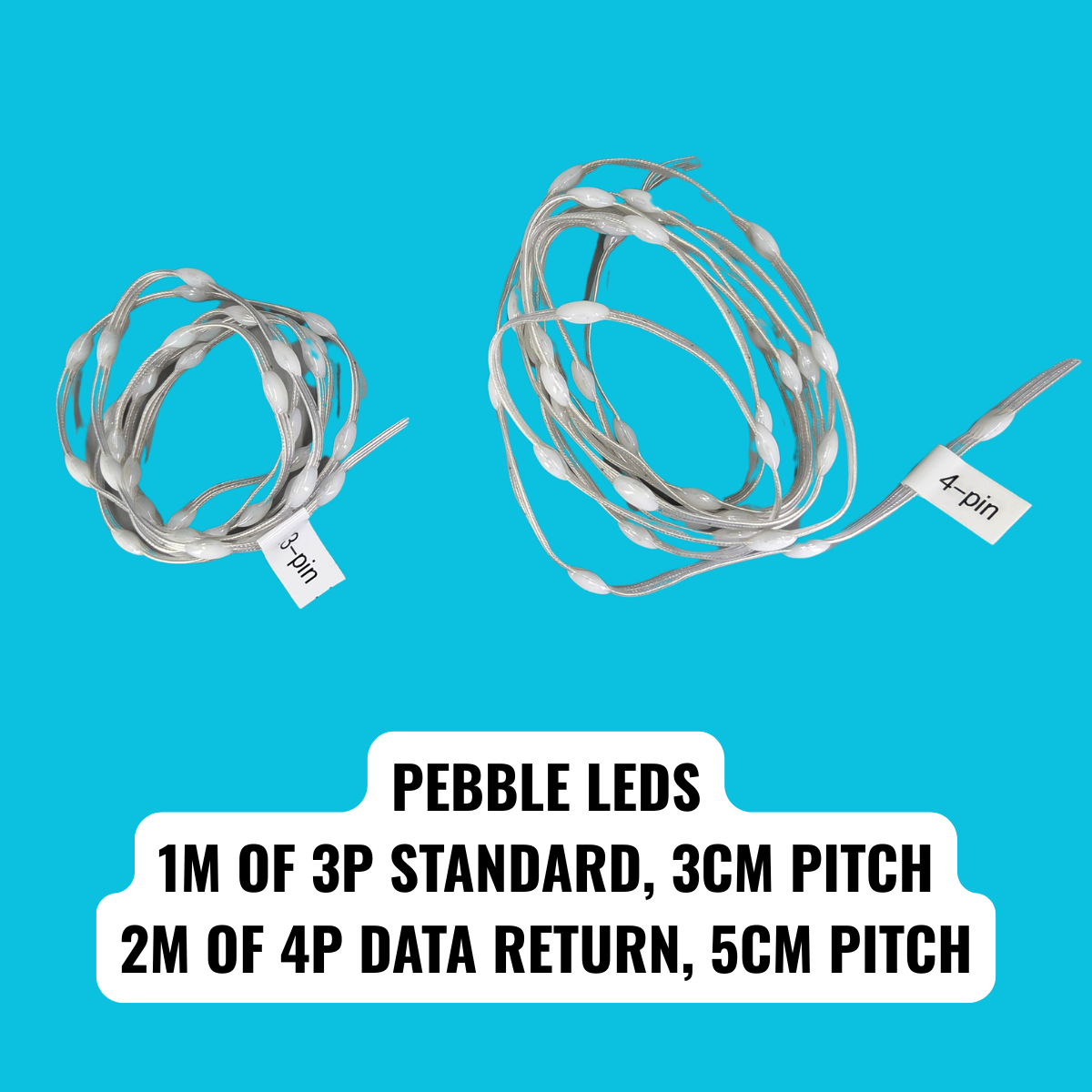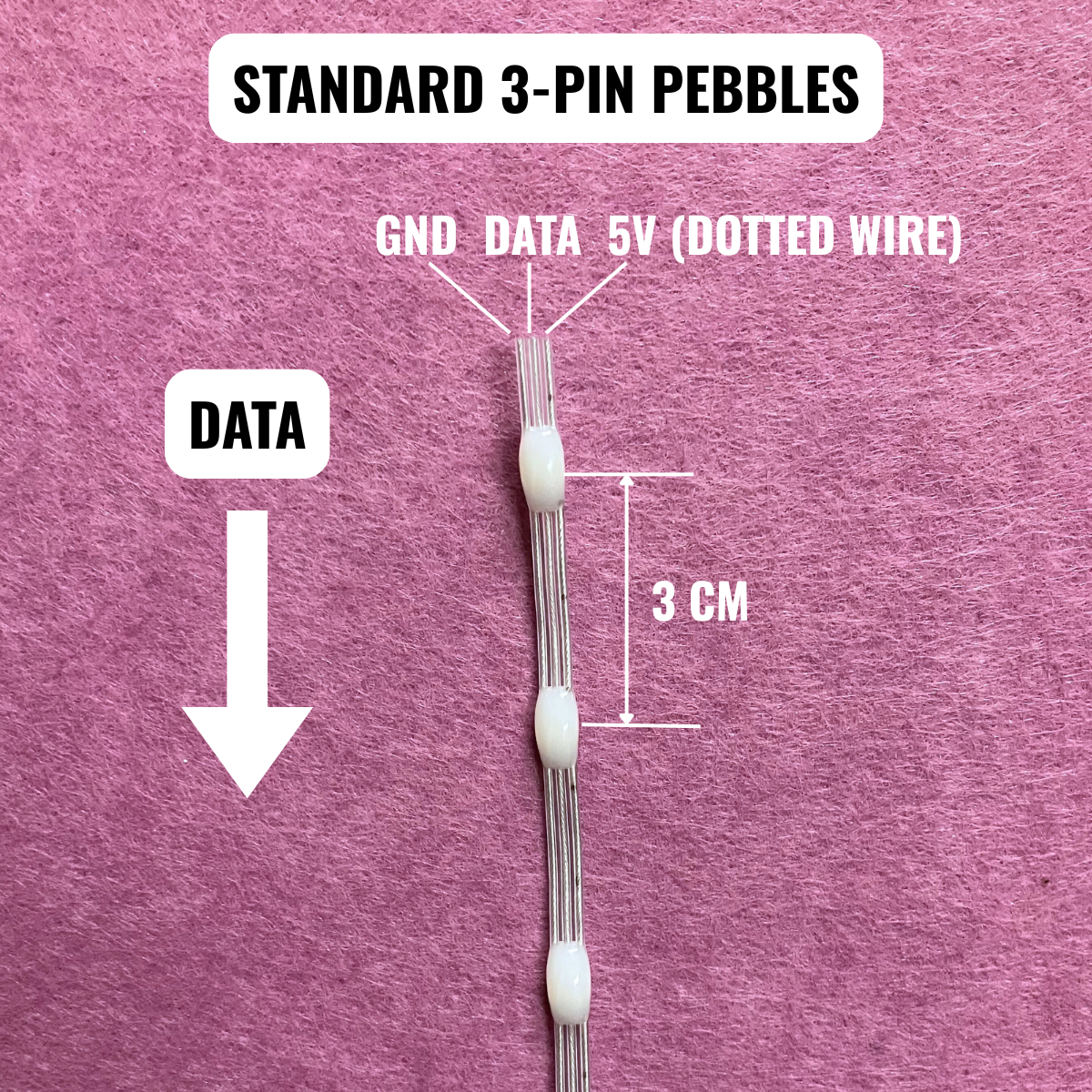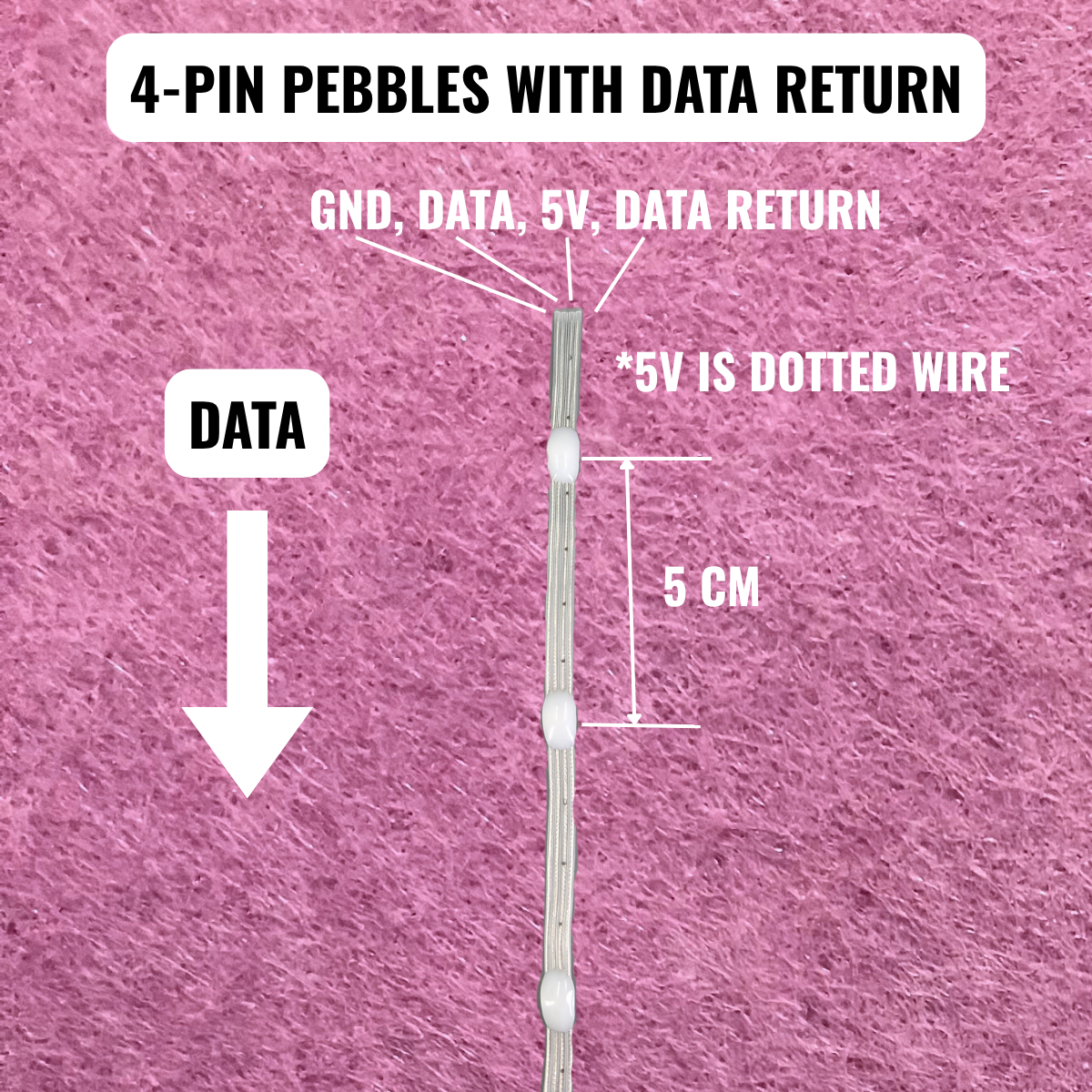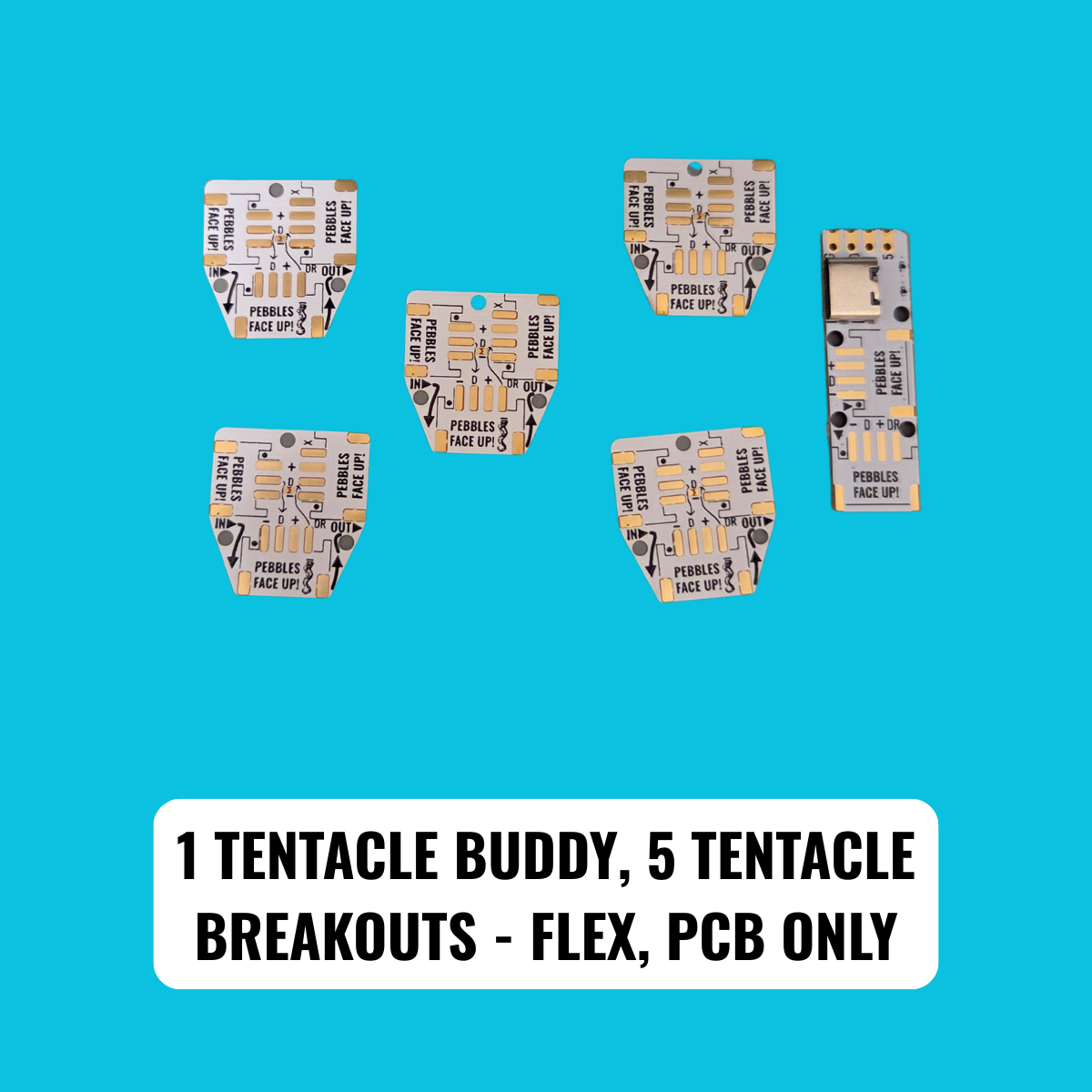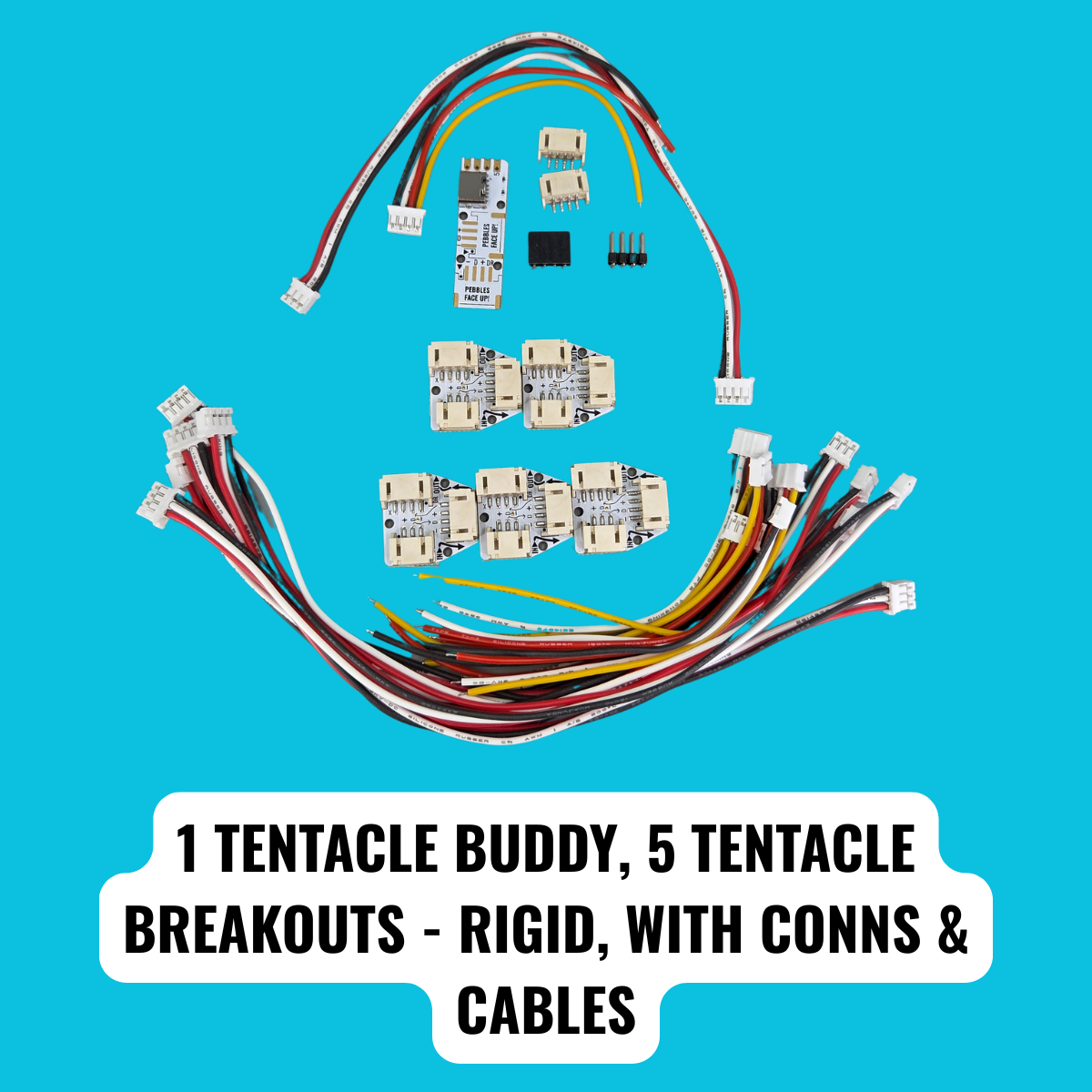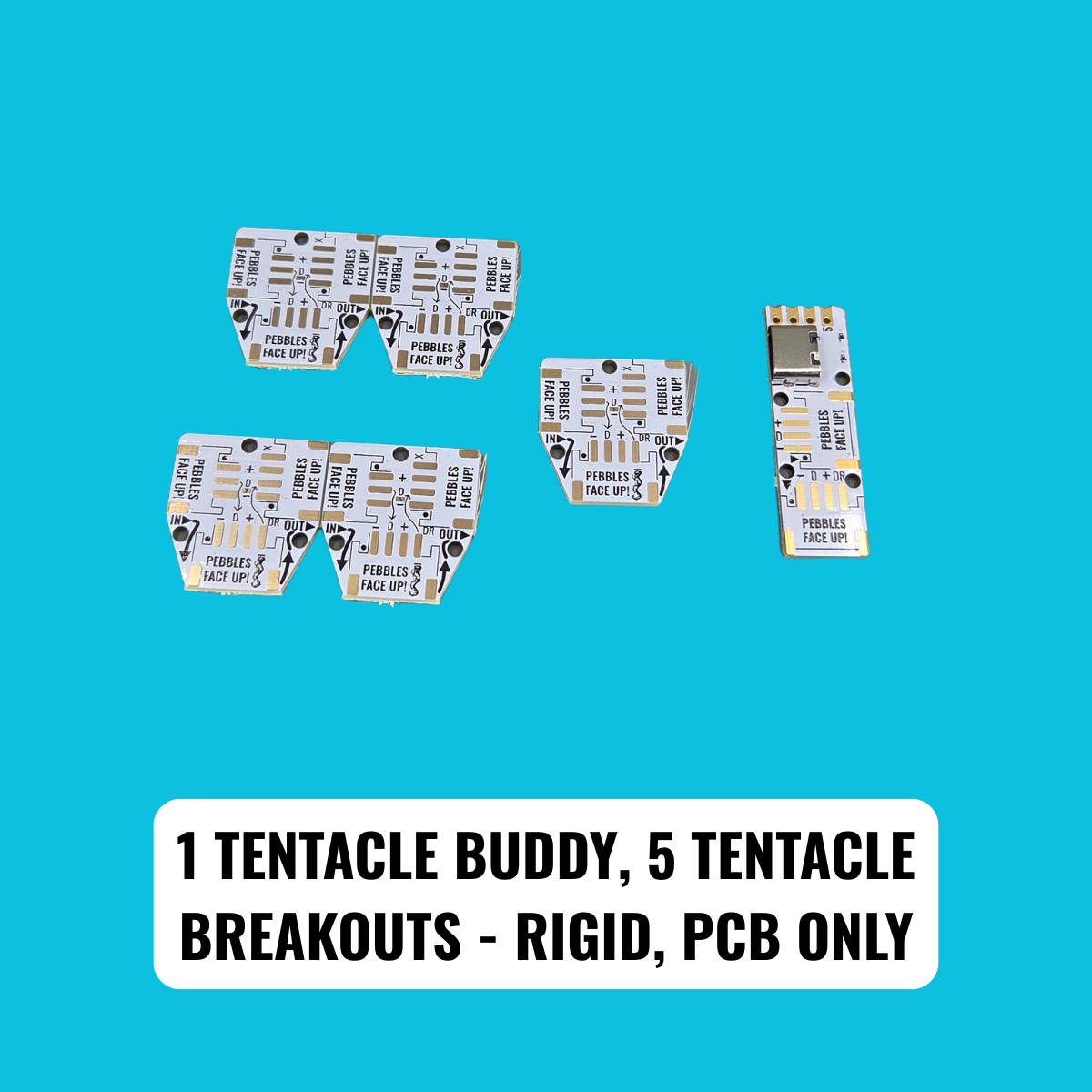Description
Tentacle Buddies help you wire up projects with strands of LEDs that dangle from a central ring (like tentacles) or hang from horizontal strips (like curtains). The Tentacle System consists of 2 boards: the Tentacle Buddy and the Tentacle Breakout. It's optimized for a Pixelblaze Pico though they can be used with any LED controller, and for Pebble-style strands with a Data Return line. They help keep your LED data wiring tidy and compact, make connectorizing strands and controllers easy, and also feature a convenient USB-C connector for powering both the LEDs and controller.
A full guide is in our Instructions.
The Tentacle Buddy Board
This board interfaces directly to an LED controller, breaks out power into a convenient USB-C connector, sends the LED data down a 4-pin Pebble strand that has a Data Return line, and then sends the returned data and power out a 3-pin Pebble connector or pads. It is shipped with all mating connectors, but only the USB-C connector is pre-soldered. This allows for a variety of integrations, and you can choose what best fits your project. Here are the options for interfacing with LED controllers:
- Solder a Pixelblaze Pico directly to the back of the Tentacle Buddy with the castellated edges at the top. Apply tape to the back of the Pico first, to insulate exposed pads.
- Populate the 0.1" right-angle headers on both the Pixelblaze Pico and the Tentacle Buddy and have a connectorized solution so you can easily swap Pixelblazes between projects
- Solder wires to the through-holes and use any LED controller
- Solder a vertical header to the through-holes and plug it into a breadboard
The 4 LED pads pointing "down" are for the first tentacle, or a 4-pin LED strand with Data Return line that brings the data out from the last LED back up to the board. You can:
- Solder a Pebble strand with Data Return directly to the 4 pads.
- Solder the 4-pin JST connector to the board and the pigtail to your strand, so you have a replaceable strand or a project that's easier to break down or have the LEDs removed for washing a wearable.
In both cases, you'll also solder the Data Return line and the Data Out from the last LED together at the end of your strand - this returns the remaining LED data to the board.
The 4 LED pads pointing "right" are for the next series of LEDs. You can:
- Solder a standard 3-pin Pebble strand directly to 3 of the pads
- Solder a 4-pin Pebble strand with Data Return to 3 or 4 of the pads (you prob will not need the Data Return wire)
- Solder the 4-pin JST connector to the board and the pigtail to any strand, for the same above reasons OR for interfacing to any tape-style strip OR for carrying the LED signals directly to a Tentacle Breakout Board
Tentacle Breakout Boards
These are for daisy-chaining more dangling strands of LEDs! The input strand or wires come in from the left 3-pin connector, the data goes down to the tentacle which is another 4-pin interface with Data Return, and then it goes out the right 4-pin connector.
Note that the right is a 4-pin connector only to make it impossible to plug in connectorized strands going between Tentacle Breakouts upside-down/backwards, this ensures each will have a 4-pin end and a 3-pin end. The 4th pin is not used for anything which is why there is no wire to it on the pigtails.
There are a few options for these boards as well:
- Populated Rigid PCBs: These already have the connectors soldered and are perfect if you want to solder pigtails to your strips or strands and connectorize everything
- Rigid PCBs, Bare: Perfect if you have your own JST PH connectors, or want to solder LED strands directly to rigid boards.
- Flex PCBs, Bare: these are great for soldering Pebble strands directly to them, while maintaining the slimmest form factor possible and a little bit of flexibility for curved surfaces. Excellent for wearables or anything small. You can also cut these circuit boards with scissors if you just want to do a direct pass-through without the tentacle, making them a great way to connect Pebble strands together without splicing.
For LEDs, we're offering a little starter kit to get you going with Pebbles. It contains:
- 1m of 3-pin standard Pebble LEDs, 3cm spacing between LEDs
- 2m of 4-pin Pebble LEDs with Data Return line, 5cm spacing between LEDs
We also offer the Pixelblaze Pico controller if you want to grab everything all at once.


